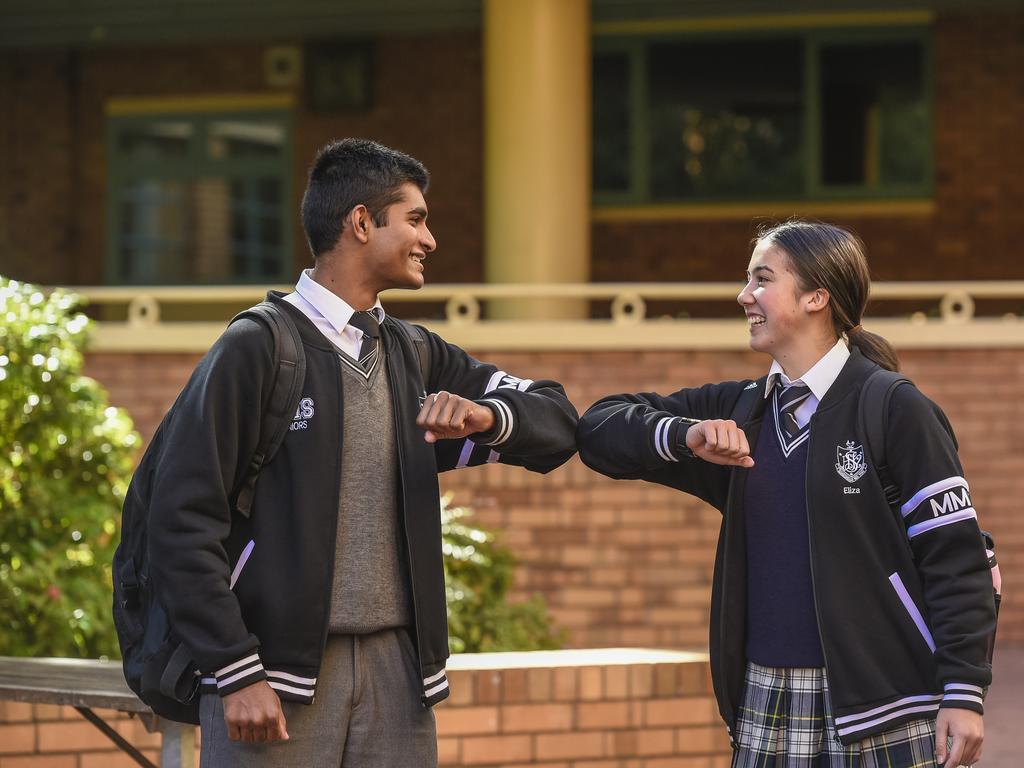Coronavirus Australia: Home schooling sets children back
Nearly half our children face learning setbacks with literacy and numeracy results set to slide.

Nearly half the nation’s children face significant learning setbacks as a result of COVID-19 school closures, with literacy and numeracy results set to slide by up to 16.7 per cent if students are kept at home for six months, new research shows.
As the states push back over federal government calls to reopen schools, a raft of new research has been released showing school closures are putting children at risk of falling behind and potentially dropping out of the education system.
More than one million vulnerable students face social, emotional and behavioural setbacks, while disadvantaged Year 5 students would lose the equivalent of 6.1 weeks of learning in reading and 10.7 weeks in numeracy if schools failed to reopen this year.
Five separate studies undertaken by top educational research bodies say online education will severely disadvantage students, with vulnerable children and those in early years facing severe long-term impacts.
The reports, released by the federal Education Department on Monday, come amid a battle between Scott Morrison and premiers over school closures. The nation’s top health advisers have declared teachers and students can safely return to the classroom without fear of the coronavirus.
Education Minister Dan Tehan has called on state governments and teachers’ unions to stop resisting school reopenings, declaring the medical evidence shows the risk of coronavirus transmission in schools is low.
“All along (the medical expert panel) has said that it is safe for children to be at school and for teachers to be at school with the proper protocols in place,” Mr Tehan said on Monday. “If we do not get our children back to school with face-to-face teaching, it’ll be most disadvantageous to those in our community with low socio-economic backgrounds.
“It will be those children that suffer the most.”
Victoria has led the states’ backlash against federal government calls to reopen schools, while the ACT, Queensland and NSW have resisted growing pressure to resume face-to-face classes.
An “independent rapid response report” on COVID-19 school closures by the University of Tasmania’s Peter Underwood Centre said there was an “urgent need” to get children back into the classroom, with 46 per cent of students “at risk of having their learning and wellbeing significantly compromised by not being at school”.
The report said the effects of the shutdown were already being felt, particularly among younger and more vulnerable children, already disengaged students and those from non-English-speaking backgrounds.
“These losses will cause a delay in cognitive gain and achievement in some students and result in others being lost to the education system,” the University of Tasmania report said.
It said many families lacked the physical space, technology and other resources to support home schooling, while less-educated parents faced even tougher challenges.
The report recommended a “targeted strategy of physical re-engagement” at schools, starting with a blend of online and in-school classes. Full-time schooling should occur from preschool to Year 2, it said.
The Centre for International Research on Education Systems said if online learning lasted for a full school year, learning gains for students from low socio-economic backgrounds would be reduced by 15-23 per cent in reading and as much as 27-33 per cent in numeracy, depending on year levels.
The same research suggested that disadvantaged Year 5 students might lose the equivalent of 6.1 weeks of learning in reading and 10.7 weeks of learning in numeracy if schools continued with online learning across four terms. For Year 9 students, the picture was even more bleak, with online teaching holding students back 9.2 weeks in reading and as much as 13.3 weeks in numeracy.
If the lockdown goes for two terms, the centre predicts NAPLAN points for reading and numeracy skills will fall by 7.6 per cent and 13.4 per cent respectively for Year 5 students and 11.5 per cent and 16.7 per cent for those in Year 9.
Melbourne University’s Graduate School of Education, in a report on the impact of school shutdowns on vulnerable children, warned those living in poverty would have “exacerbated risk”, finding it more difficult to catch up after schools returned.
“Importantly, there is a probability that across the education life course the size of the vulnerable group will increase,” the graduate school said.
The school’s researchers, who drew on international evidence following natural disasters such as earthquakes and hurricanes, found disadvantaged students were likely to suffer from increased stress and behavioural issues as a result of the disruption to their schooling, and would struggle with a lack of teacher supervision.
The National Centre for Student Equity in Higher Education said the mass closure could exacerbate educational inequities for the most vulnerable children.
Its paper finds the closures could subject as many as one million vulnerable students to worse social, emotional and behavioural outcomes.
The NCSEHE said stark differences in the education levels of students could be exacerbated by home schooling as the parents of disadvantaged children might not have the skills or experience to support home learning.
Australian Bureau of Statistics data shows that of the 3.9 million students studying across the nation, 20 per cent come from low socio-economic households.







To join the conversation, please log in. Don't have an account? Register
Join the conversation, you are commenting as Logout